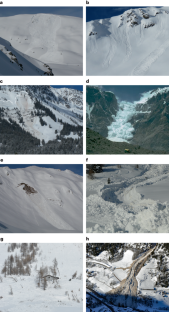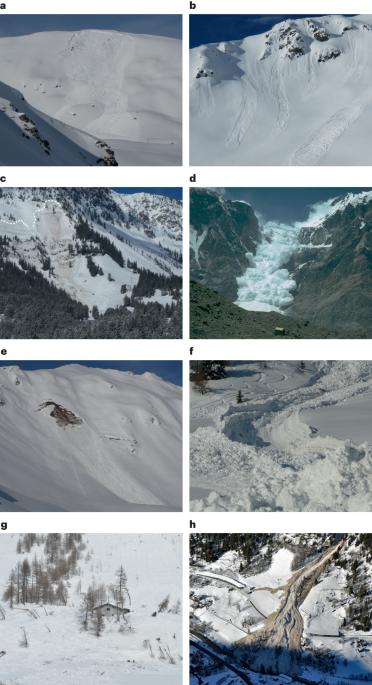Climate change impacts on snow avalanche activity and related risks
引用次数: 0
Abstract
In the rapidly evolving mountain cryosphere, snow avalanches threaten livelihoods, settlements and infrastructure. In this Review, we analyse past and projected impacts of climate change on avalanche activity and the associated risks. The limited availability of comprehensive datasets, the potential confounding factors and the limitations of statistical approaches can make it difficult to identify trends in avalanche activity. However, available data indicate a general decrease in avalanche number, size, seasonality and active paths at low elevations, and an increase in the proportion of wet avalanches relative to dry avalanches. Increased snowfall at high elevations can lead to peaks in avalanche activity and an increase in the number of wet and slush-like avalanches. Activity patterns gradually shift from low to high elevations under continued warming. These changes affect avalanche risk; however, risk is also influenced by factors such as land use and the growth or decline of human settlements. The impact of these factors varies across diverse mountain environments, making it challenging to predict how risk will evolve under a changing climate. Therefore, future research should aim to couple an improved systemic understanding of the impacts of these factors with slope-scale projections of avalanche hazards and risks to support sustainable mountain development and adaptation strategies. Avalanche conditions and related risks are influenced by ongoing changes in temperature and precipitation. This Review synthesizes existing data, approaches and results to highlight dominant patterns of change and how they are linked to climate change and other socio-environmental factors.


气候变化对雪崩活动和相关风险的影响
在快速演变的高山冰冻圈中,雪崩威胁着人们的生计、定居点和基础设施。在本综述中,我们分析了气候变化对雪崩活动及相关风险的过去和预测影响。由于综合数据集的可用性有限、潜在的混杂因素和统计方法的局限性,很难确定雪崩活动的趋势。不过,现有数据表明,低海拔地区雪崩的数量、规模、季节性和活动路径普遍减少,湿雪崩的比例相对于干雪崩有所增加。高海拔地区降雪量的增加会导致雪崩活动达到高峰,湿雪崩和泥泞型雪崩的数量也会增加。在持续变暖的情况下,活动模式会逐渐从低海拔地区向高海拔地区转移。这些变化会影响雪崩风险,但风险也受到土地使用和人类定居点增减等因素的影响。这些因素对不同山区环境的影响各不相同,因此预测气候变化下的风险演变具有挑战性。因此,未来的研究应着眼于将对这些因素影响的系统性理解与雪崩危害和风险的斜坡尺度预测结合起来,以支持山区的可持续发展和适应战略。雪崩状况和相关风险受到气温和降水量持续变化的影响。本综述综合了现有的数据、方法和结果,以突出主要的变化模式,以及这些模式与气候变化和其他社会环境因素之间的联系。
本文章由计算机程序翻译,如有差异,请以英文原文为准。
求助全文
约1分钟内获得全文
求助全文

 求助内容:
求助内容: 应助结果提醒方式:
应助结果提醒方式:


